When Nintendo introduced the Famicom Disk System in Japan, one of the obvious benefits was that the disks for it were much cheaper to produce than cartridges. Cheap enough to use as pack-in goodies for a videogame magazine though? I'm not sure. For the games I want to talk about, some sources call them "cover disks", which sounds like they came with the magazine, but Japanese Wikipedia seems to say that the games were available from Disk Writer kiosks. Jeremy Parish, while covering a port of one of the games (https://www.youtube.com/watch?v=Vfw4gZ2Cz9g), also talks about the Famimaga Disk games and states that they came with the magazine, so it might be true after all.
Looking some more into this, I found this fairly elaborate Japanese write-up of the Famimaga Disk series and their conception (https://pony.velvet.jp/fcdisk/fmcmdskw30.html), and there is also no mention of the games being pack-ins with the magazine, instead only referring to them being available from disk writer kiosks.
However they were released, all of the games in the Famimaga Disk series came about because of an intiative by Tokuma Shoten, the publisher of Family Computer Magazine (or Famimaga for short). To celebrate the 100th issue of Famimaga, they asked readers to send in their game ideas, with the most interesting submissions being developed as actual Famicom Disk System games. Famimaga and its sister publication MSX FAN also featured sections with BASIC program listings sent in by readers, some of which were also picked to create these games.
I highly recommend checking out the Japanese write-up I mentioned earlier, if you're interested at all in this series, because it includes a bunch of magazine scans and discussion of the contests and submissions:
Famimaga Disk Vol. 1 - Hong Kong (1990)
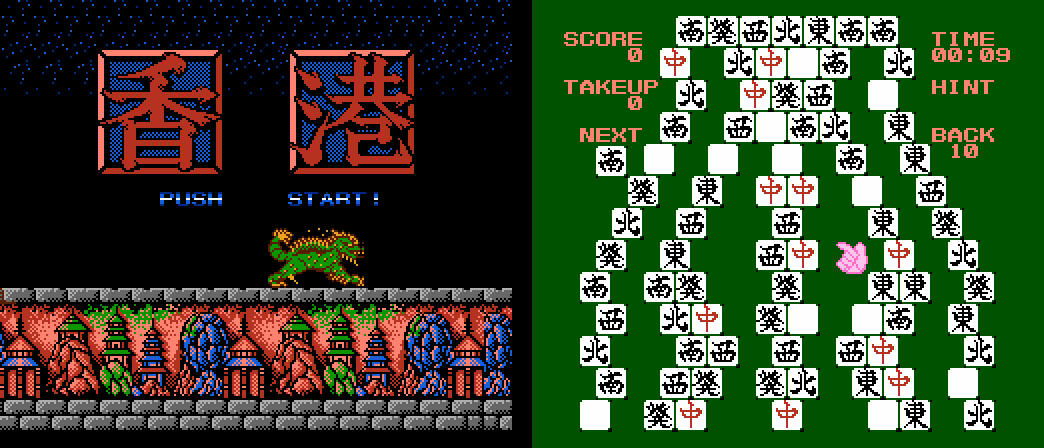
This is a variant of Mahjong Solitaire, but a rather simple one. The game tells you which kind of tile you have to pick next, and the tile arrangement is always flat. As with most of these games, it includes an editor where you can change the tiles and then play your modified arrangement.
It was originally published as a reader program in MSX FAN, and was also later ported to the Gameboy. This Gameboy version was covered by Jeremy Parish in his Game Boy Works series as mentioned before: https://www.youtube.com/watch?v=Vfw4gZ2Cz9g
This game isn't much to write home about. Even for Mahjong Solitaire it is incredibly simple and bare.
Famimaga Disk Vol. 2 - Panic Space (1990)
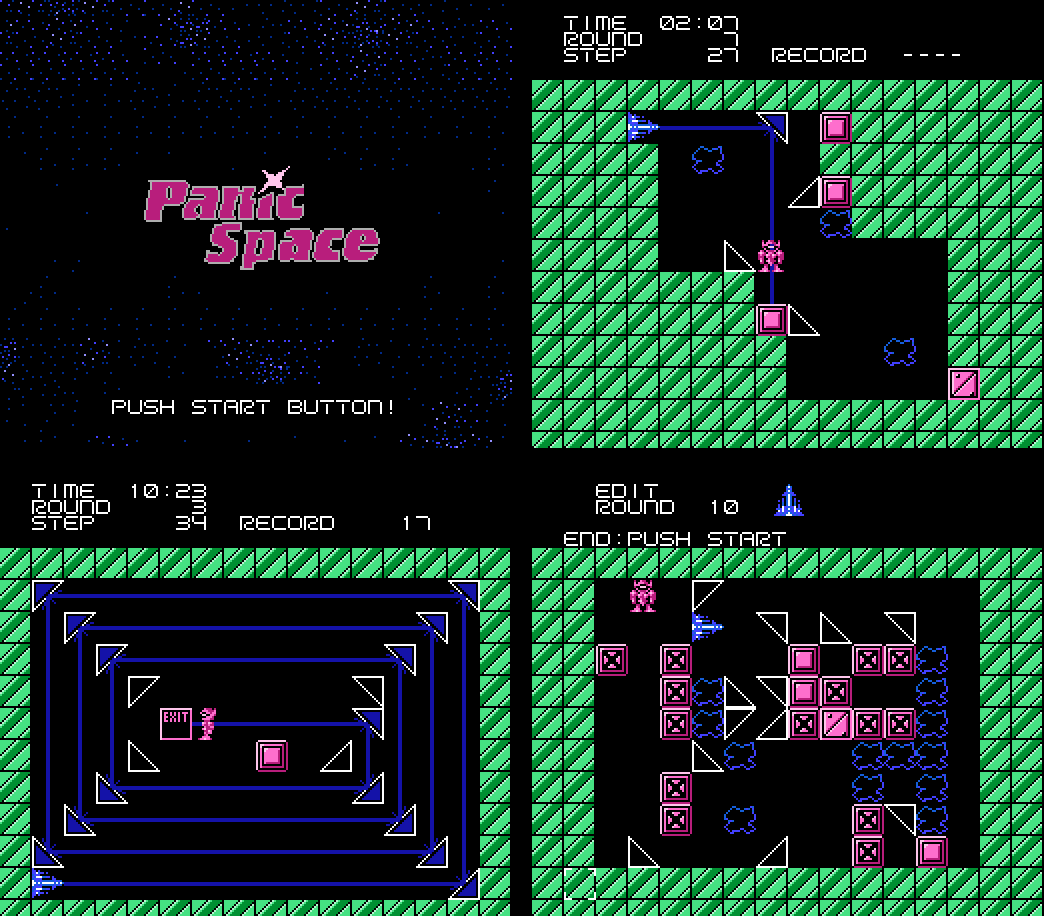
A variant of the box pushing puzzle game Soukoban where you have to arrange mirror blocks to guide laser beams. The goal of every stage is to destroy all the rocks with the laser, and then open the exit with the laser. If the laser hits any of the green blocks surrounding the stage, you immediately fail.
Panic Space also started out as a reader program in MSX FAN. There is a "game mode" with limited lives where you can try to solve the game's 50 stages without losing all your lives. In game mode, there are items to pick up in stages, which can help you cheese the solution a bit. Then there's the "puzzle mode" where you can pick any puzzle and try to solve it in the least number of steps. And of course, semi-mandatory for FDS games, there is an edit mode where you can build your own stage.
This is a big improvement over the previous game. Panic Space is an enjoyable puzzle game.
Famimaga Disk Vol. 3 - All One (1991)
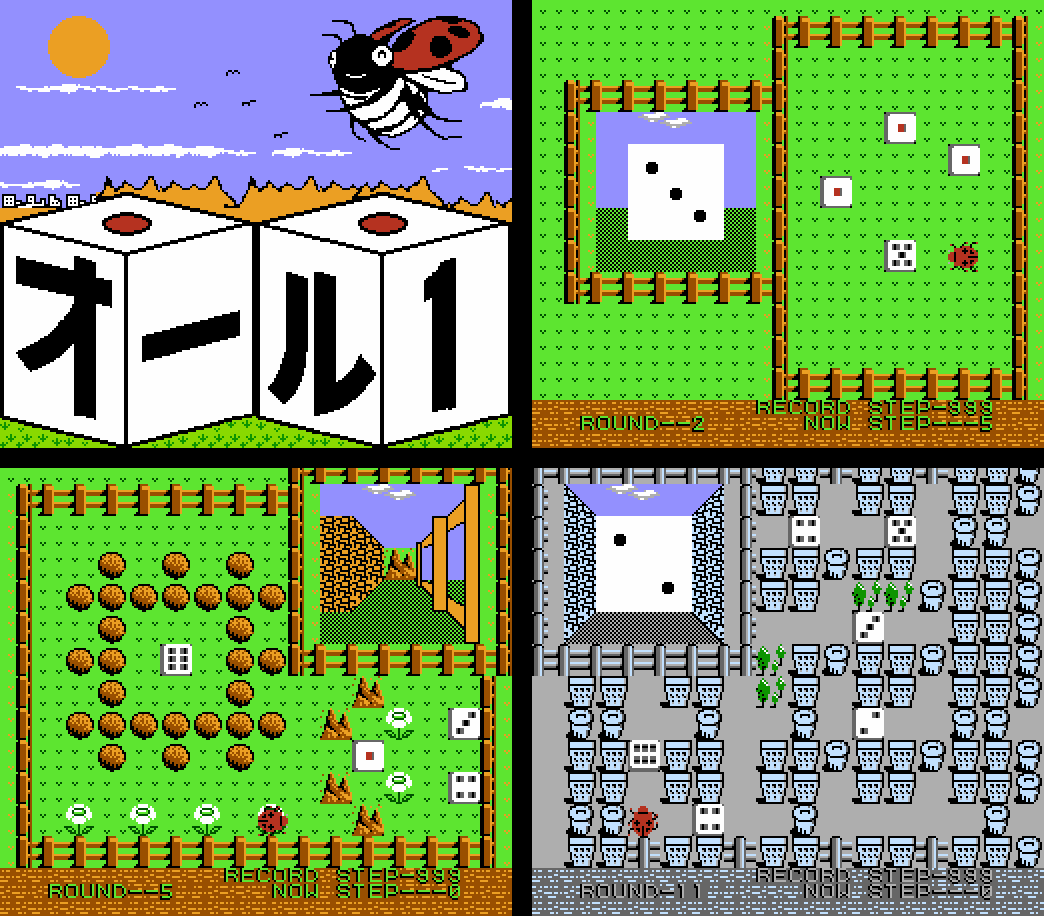
Another Soukoban variant, in which you have to roll dice blocks so that the "one" face of all dice is facing up. On a part of the screen, there is a sort of "first person" view, in the style of old dungeon crawlers, which allows you to look at the sides of dice, in order to determine their orientation. There are again 50 stages in total, but no editor or other modes.
All One was a winning submission of the first "Famimaga Disk Award" (ファミマガディスク大賞), along with the next game in the series. While the contest only required sending in a description of the game idea, the author also developed a simple version of the game for MSX2.
This is also a pretty decent puzzle game, in my personal opinion even better than Panic Space. The dice mechanic lends itself well to good box pushing puzzles, and the presentation is nice and interesting.
Famimaga Disk Vol. 4 - Clox (1991)
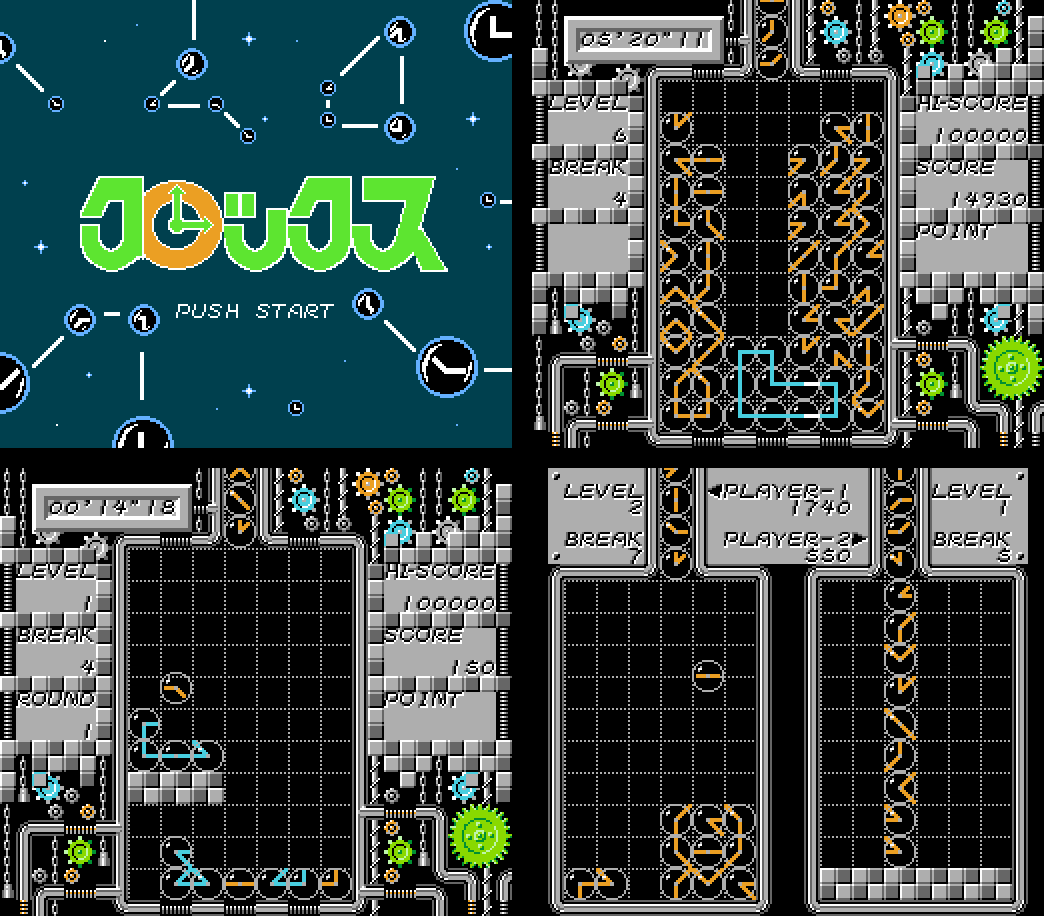
Clox is a drop puzzle game, in which you drop glass orbs with clock faces into your playing field. The goal is to arrange the orbs so that the lines of the clock faces form closed loops. When you finish a loop, the loop itself and everything inside it disappears. You also have a limited number of "breaks", which increase with every successful loop and let you break existing glass orbs to clear away your mistakes.
There are two single player modes. Mode A is the regular score chasing mode, where you start with an empty playing field and try to make loops to get score and raise the gameplay level. Mode B is a puzzle mode with distinct stages where you are tasked to complete unfinished loops. Additionally there is a two player versus mode.
Creating a loop can be a bit finicky; sometimes I would consider a loop finished, but the game does not, possibly when there is an outside corner of the loop, where something else could still attach. It's also very easy to accidentally use the "break" action and break an important orb. The game definitely feels more difficult than most drop puzzlers.
Clox is a winning submission of the first Famimaga Disk Award just like All One, and again the author implemented an MSX2 prototype to demonstrate the game.
I was fairly certain that I had seen a different version of Clox before, but I could not find it. The closest thing I can think of is the drop puzzle game "Gunpey", in which you also have to connect lines on your blocks, but instead of forming a loop they have to span the playing field.
Famimaga Disk Vol. 5 - Puyo Puyo (1991)
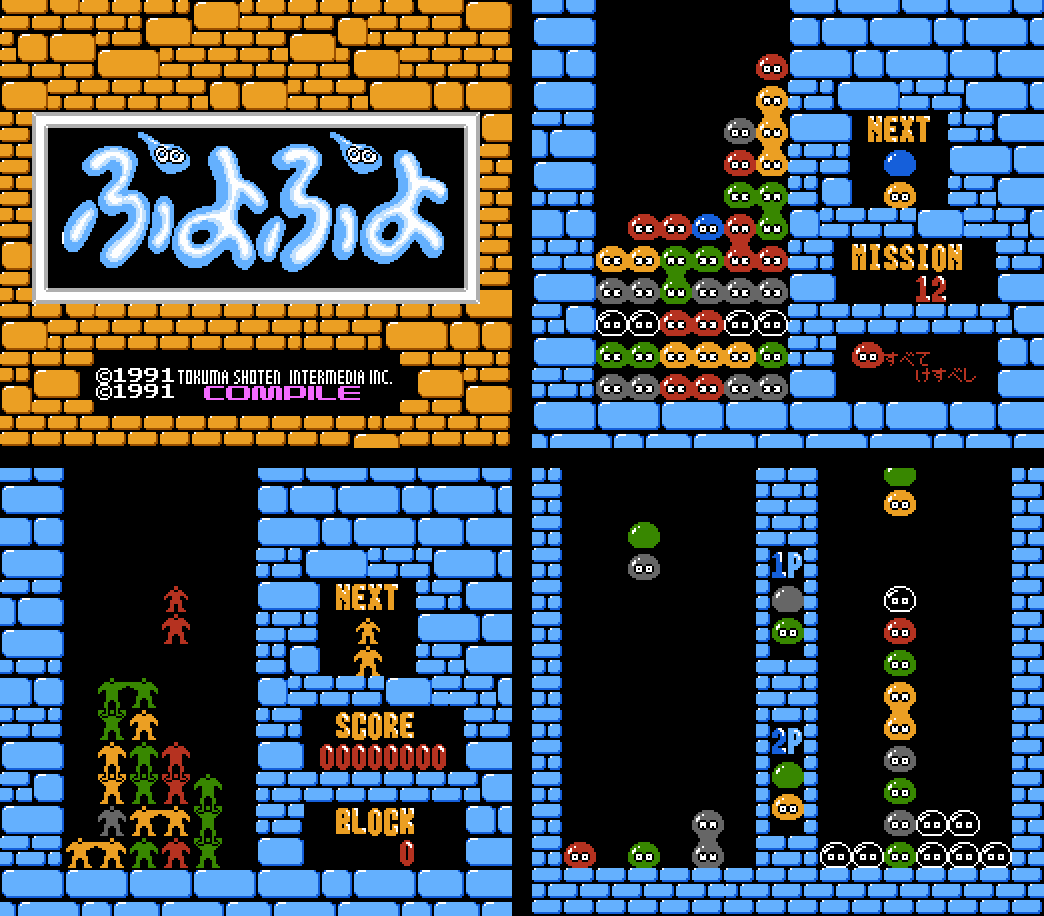
This release is an outlier, because it did not involve a reader submission like the other games. Supposedly it was originally planned that game no. 5 would be picked from the submissions of the second Famimaga Disk Award, but none of the submissions were interesting enough to be published as a game. Instead the magazine worked together with developer Compile to publish their now-famous puzzle game Puyo Puyo as part of the Famimaga Disk series.
This is the first release of Puyo Puyo, together with the MSX2 version that came out around the same time. It features a regular endless mode, a "mission mode" where you have to fulfill certain on-screen "missions" to finish a stage, and a 2 player versus mode. Oddly enough you can also switch to alternate sprites for the puyos, replacing them with little human figures.
Everyone already knows Puyo Puyo, so there's not much else to say.
Famimaga Disk Vol. 6 - Janken Disk Jou (1992)
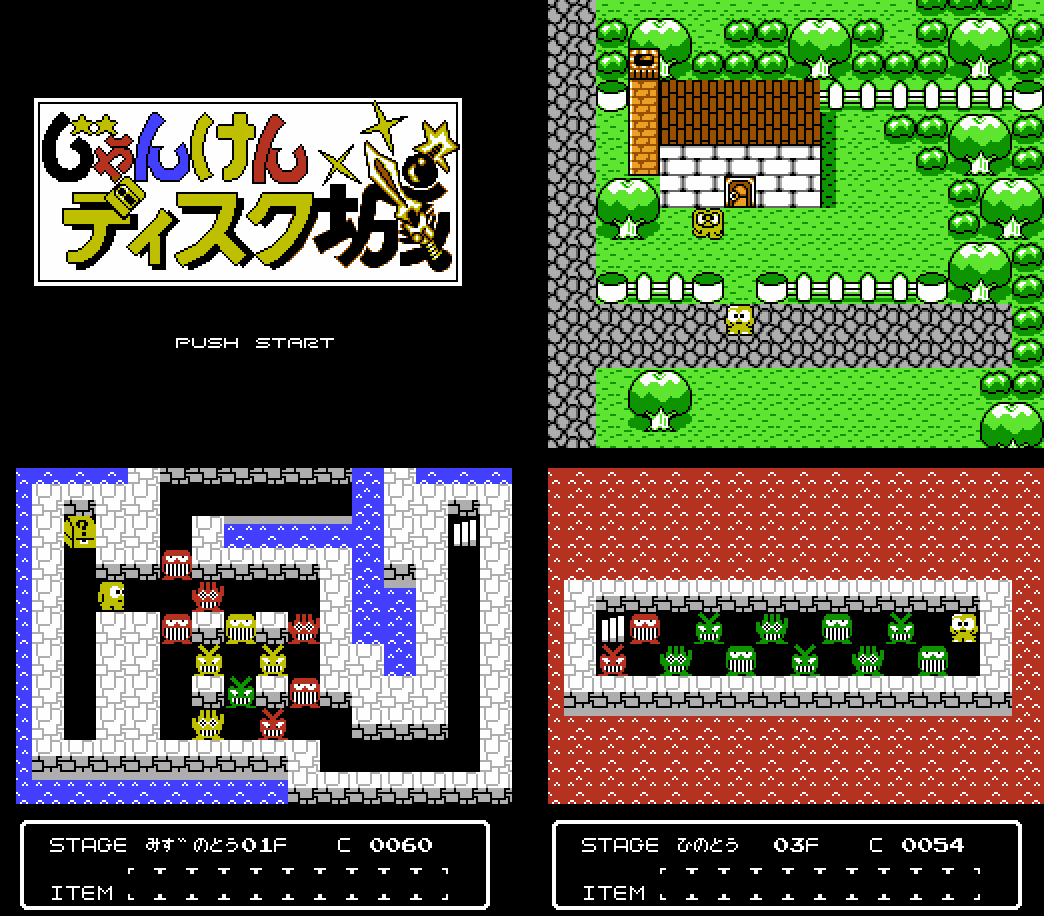
The final game of the series, and apparently also the final release for the Famicom Disk System in general, is the one that prompted me to research these games in the first place. I believe I saw a screenshot of it on a Japanese twitter account, with Rock Paper Scissors hands arranged on a Soukoban style screen, and that seemed like a strange and intriguing mix of gameplay ideas.
Janken Disk Jou (Janken = Rock Paper Scissors, Jou 城 = Castle) was the winner of the third Famimaga competition, which was renamed to "Dis-kun Game Award" (ディスくんゲーム大賞) after the disk-shaped FDS mascot Dis-kun. It also required submissions to use Dis-kun as the player character.
The game is indeed a kind of Soukoban, with a very light RPG structure. Dis-kun starts out in a little RPG town with other characters to talk to. After heading out of town to the king's castle to receive their mission, Dis-kun can finally head to the Janken Disk Castle where an old demon called the Disk Kaiser has been sealed away. In this castle are three towers labeled Fire, Water and Ice, each with a series of puzzle stages. In each of these towers there is also a point where you cannot progress any further and must pick up a special item from another tower in order to continue (like fire magic to melt a block of ice).
The actual puzzle mechanics use the Janken concept very well and make for another interesting twist on Soukoban. The blocks are either a rock, a paper, or a scissor hand, and come in three colors to indicate their power. When you push blocks next to each other, they interact by Janken / Rock Paper Scissors rules: rock attacks scissors and so on. The attacks do damage based on the blocks' power, so that a 2 power block can destroy another 2 power block, but will only reduce a 3 power block to 1 power. If you're pushing a block into a spot with multiple Janken interactions, the pushed block will attack first, and then be attacked.
There are also consumable items in the game, which can be bought in town or picked up from chests in the puzzle rooms. These items allow you to destroy blocks of a specific type, or of any type. The chests in puzzles are often optional and require additional puzzle solving to reach, but the acquired items then let you cheese puzzles if you can't find the legitimate solution.
I did not finish this game, but I did play it for several hours and found it pretty good. Very much recommended if you can enjoy box pushing puzzle games. But this is the only game in the Famimaga Disk series with a serious language barrier. If you don't understand the Japanese text, it's easy to get stuck somewhere. Thankfully there is a full walkthrough on GameFAQs to help with such issues: https://gamefaqs.gamespot.com/famicomds/570529-janken-disk-jou-famimaga-disk-vol-6/faqs/72809
As mentioned, this was apparently the last official release for the Famicom Disk System. A few months later, disk writer kiosks were removed from stores. Supposedly it was still possible afterwards to have games written to your disks by visiting a Nintendo branch office though.
Sidenote: Lagrange Point
Additionally to the Famimaga Disk series, there was another project started for the 100th issue celebration of Famimaga. Together with Konami, a game would be developed for which readers could submit ideas and even assets, such as the game title, enemy names, NPC dialogue, and music compositions. The resulting game was the JRPG title Lagrange Point.
